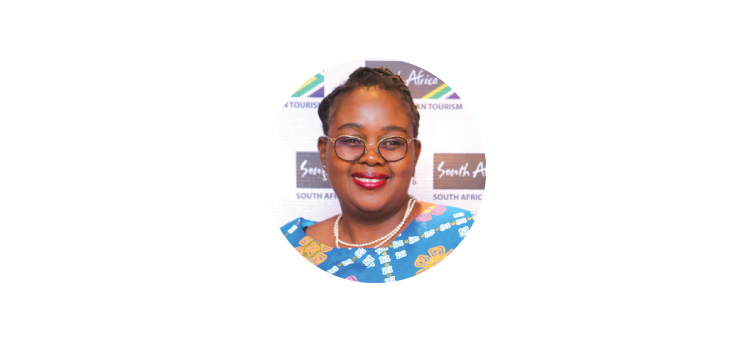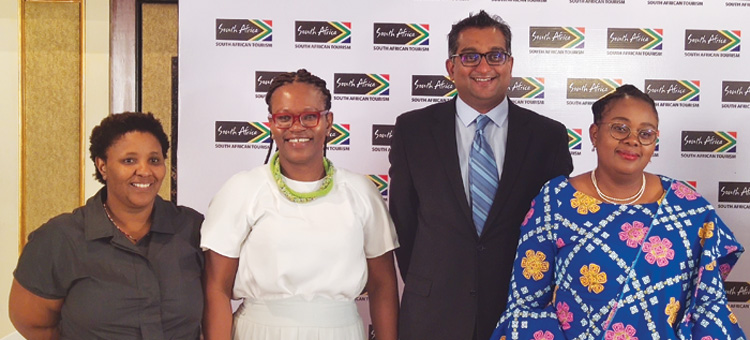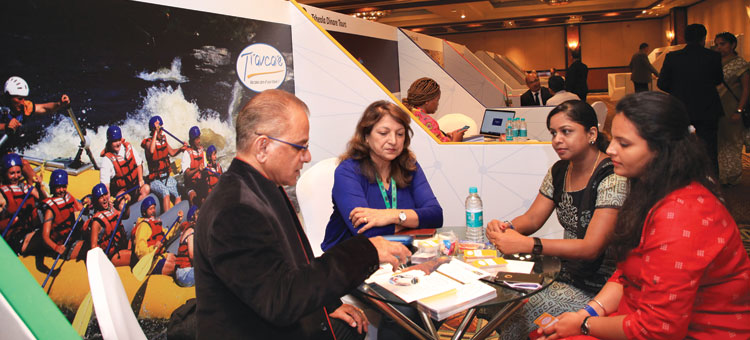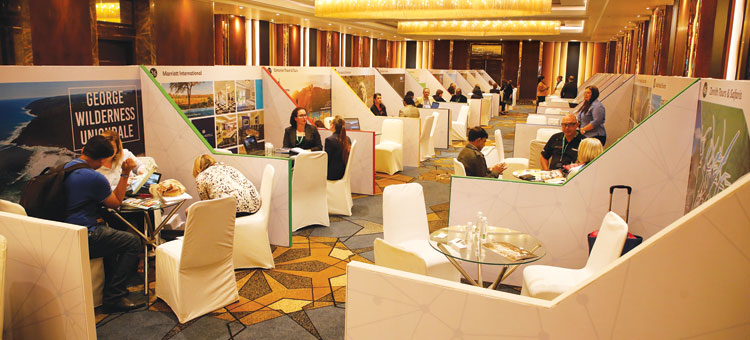Mumbai: South African Tourism (SAT) has had a busy start this year – SAT was at SATTE for the very first time with a jumbo 43-member delegation followed by a 3-city Annual Roadshow culminating in Mumbai with the new Minister for Tourism Mmamoloko Kubayi-Ngubane interacting with trade and media. The campaigns were aimed at targetting 1,00,000 visitors from India in 2020.
In 2020, South African Tourism aims to cross one lakh visitors from India, which continues to remain one of South Africa’s key focus markets globally
The SAT delegation also had other senior leaders like Ravi Nadasen, Interim Board Chairperson, South African Tourism, Sthembiso Dlamini, COO, Hanneli Slabber, Regional General Manager, Middle East, Asia and Australasia and Neliswa Nkani, Hub Head, MEISEA.

“We have reached out to Indian carriers as well as foreign airlines flying to India and South Africa to operate the Mumbai – Johannesburg schedule”
Mmamoloko Kubayi-Ngubane, Minister for Tourism, South Africa
South Africa is aiming to double arrival numbers to touch 21 million FTAs by 2030 according to Minister Kubayi-Ngubane. She said India is a key source market witnessing exponential growth. “During my visit, we have engaged with tour operators, MICE agents and corporate buyers to understand barriers to growth and how to effectively address them.”
The current visa regime, one of the major hurdles impacting growth in Indian arrivals will see a major shift soon. The Minister announced an-e-visa program for Indian travellers. The program will be piloted in January and full implementation will be from April 2020. Five days will be the turn around time for the e-visa. “We are exploring how to leverage the US/Schengen visa holder database to expedite visa approval for these travellers from India.”
For families with children, the child’s unabridged birth certificate which was earlier a requirement has been done away with to allow hassle free family travel. “As part of BRICS community, SAT wanted visa fee waiver for Indian travellers, but we have not been able to secure it. However, regarding the issue of multiple entry visa, a Memorandum of Agreement has been signed between home ministers of South Africa and India. We are now waiting for South African parliament’s ratification,” the Minister informed.
SAT recently finalised a Tourism Safety and Security Strategy and ran a pilot program in December 2019-January 2020 during their peak season with just one incident reported. Ground personnel (tourist police) and technology (CCTV cameras) are ensuring the focus is on prevention rather than post incident response.
When asked about the discontinued Mumbai – Johannesburg direct flight of South African Airways, Minister Kubayi-Ngubane had a surprising response. “We have reached out to Indian carriers as well as foreign airlines flying to India and South Africa to operate the Mumbai – Johannesburg schedule. We can complete the paper work and offer the license we hold to any willing partner in two weeks and in three months from now hope to have that direct flight operationalised.”
With 81,316 Indian arrivals as of October 2019, the destination board shared a positive outlook for the Indian market. From January to September 2019, MICE accounted for 24 per cent of the Indian arrivals. 43 per cent of overall Indian visitations to South Africa were repeat travellers. As of September 2019, total spends by Indian travellers in South Africa had reached a 4-year high. 2019 witnessed a 36.6 per cent increase in Indian traveller spends on shopping and a 26 per cent increase in spends on leisure activities in South Africa. Average length of stay witnessed a year on year increase of 8 per cent in the first half of 2019.
“India continues to remain one of our key focus markets globally and it is encouraging to observe consistent, upward growth from traditional regions like Mumbai, Delhi & Bengaluru as well as rising visitor traffic from emerging cities like Pune. With more and more visitors citing South Africa’s scenic natural beauty as reasons to visit, we are focused in our efforts towards opening up newer geographies in our country. This will serve a dual objective of catering to this very consumer demand as well as offering a diversity of itinerary options for our trade partners to sell,” said Nkani.
Between January to June 2019, around 43 per cent of total Indian visitors to the Rainbow Nation were from Mumbai. 62 per cent visitors from Mumbai travelled solo, while 13 percent travelled with their partners. During the same period, around 21 per cent of total Indian visitors to South Africa were from Delhi. 40 per cent visitors from Delhi travelled solo, while 26 per cent travelled with their partners.







